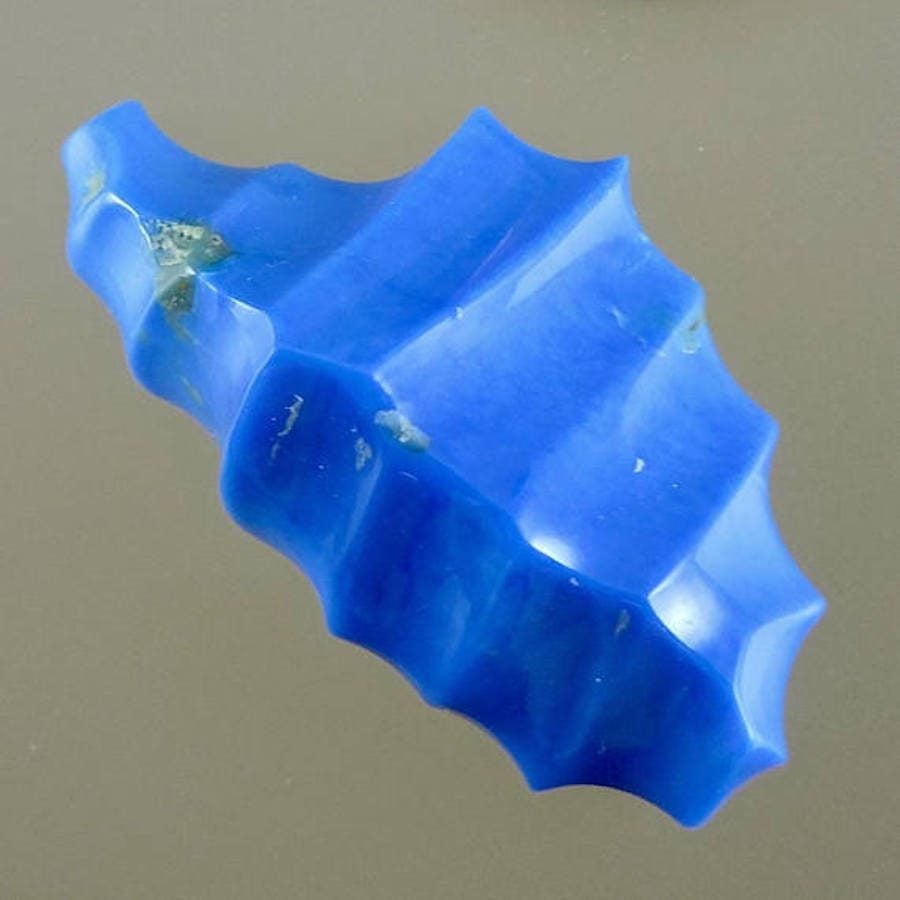Ceruleite Value, Price, and Jewelry Information
A little-known gem material of truly exquisite color, sky-blue ceruleite takes a very high polish easily and quickly. However, fine, solid, cuttable pieces are extremely rare.
1 Minute Read
A little-known gem material of truly exquisite color, sky-blue ceruleite takes a very high polish easily and quickly. However, fine, solid, cuttable pieces are extremely rare.
Start an IGS Membership today
for full access to our price guide (updated monthly).Ceruleite Value
Does Ceruleite Make a Good Jewelry Stone?
You're more likely to find ceruleite specimens, if at all, in mineral collections than in jewelry collections. However, you'll see few cut ceruleites, even in museums, due to the rarity of good, cuttable material. Such quality rough is quite expensive. Nevertheless, ceruleite's blue colors make it very appealing to collectors of unusual gem material. Polished ceruleite gems can have a far deeper color than that of the rough nodules.
Beyond rarity and expense, however, ceruleites pose additional challenges for jewelry enthusiasts. These gemstones have a lower hardness (5-6) than more common jewelry stones such as quartz. Their porosity also makes them difficult to cut and wear. Protective settings are recommended. Earring and pendant use should pose fewer risks than ring use.
Identifying Ceruleites
This gemstone leaves a blueish white streak. However, keep in mind that streak testing ranks as a destructive test. Conduct it on a piece of rough, never a finished gem, only as a last resort.
Enhancements
Due to its porosity, ceruleite is sometimes treated with plastic impregnation. Such impregnated material has a specific gravity of 2.58.
Where is Ceruleite Found?
The type locality for this gem is the Emma Luisa Mine in Guanaco, Chile. Chile remains an important source for this gem.
Southern Bolivia has produced cabbing material of fine color. However, the total amount of this yield may not exceed several hundred pounds.
Other notable gem sources include:
- United States: Arizona; Idaho.
- Cornwall, England.
- Australia; France; Namibia; South Africa.
Stone Sizes
Nodules usually range in size from less than 1 inch up to several inches. Typically small, this material yields cabochons only.
Caring for Ceruleites
Store ceruleites separately from other gems to avoid contact scratches.
Avoid cleaning ceruleites with any mechanical systems. Clean these gems only with a soft brush, mild detergent, and warm water. Don't use any other cleaning solutions, since ceruleites may react to chemicals in them. Don't soak ceruleites. Wipe pieces with a damp cloth after wearing them. Consult our gemstone jewelry cleaning guide for more recommendations.
Joel E. Arem, Ph.D., FGA
Dr. Joel E. Arem has more than 60 years of experience in the world of gems and minerals. After obtaining his Ph.D. in Mineralogy from Harvard University, he has published numerous books that are still among the most widely used references and guidebooks on crystals, gems and minerals in the world.
Co-founder and President of numerous organizations, Dr. Arem has enjoyed a lifelong career in mineralogy and gemology. He has been a Smithsonian scientist and Curator, a consultant to many well-known companies and institutions, and a prolific author and speaker. Although his main activities have been as a gem cutter and dealer, his focus has always been education. joelarem.com
International Gem Society
Related Articles
Black Diamond Value, Price, and Jewelry Information
Chameleon Diamond Value, Price, and Jewelry Information
Gray Diamond Value, Price, and Jewelry Information
Green Diamond Value, Price, and Jewelry Information
Latest Articles
Quartz Toxicity: Understanding the Risks for Jewelers and Wearers
Synthetic Amethyst: What is it and How is it Made?
Hambergite Value, Price, and Jewelry Information
Pearl Simulants: How to Spot Faux Pearls
Never Stop Learning
When you join the IGS community, you get trusted diamond & gemstone information when you need it.
Get Gemology Insights
Get started with the International Gem Society’s free guide to gemstone identification. Join our weekly newsletter & get a free copy of the Gem ID Checklist!
